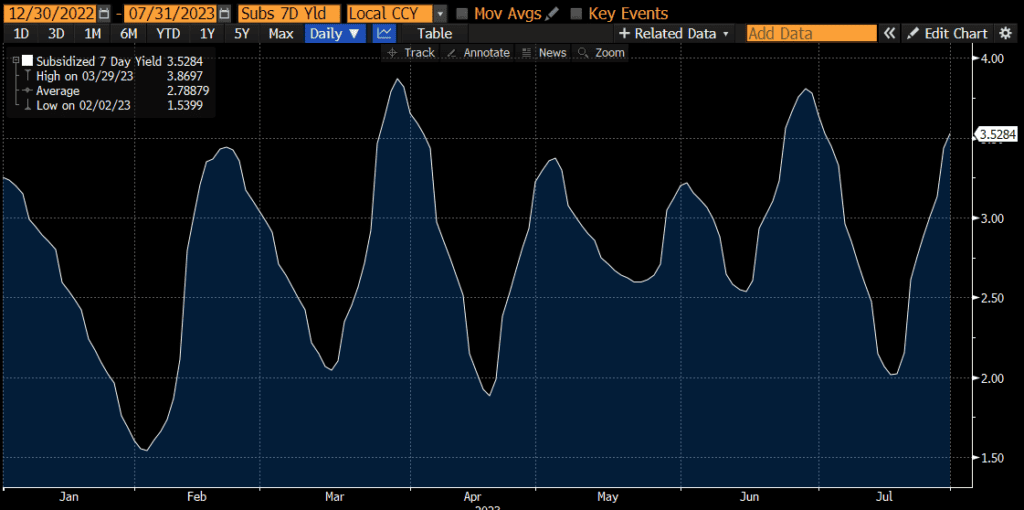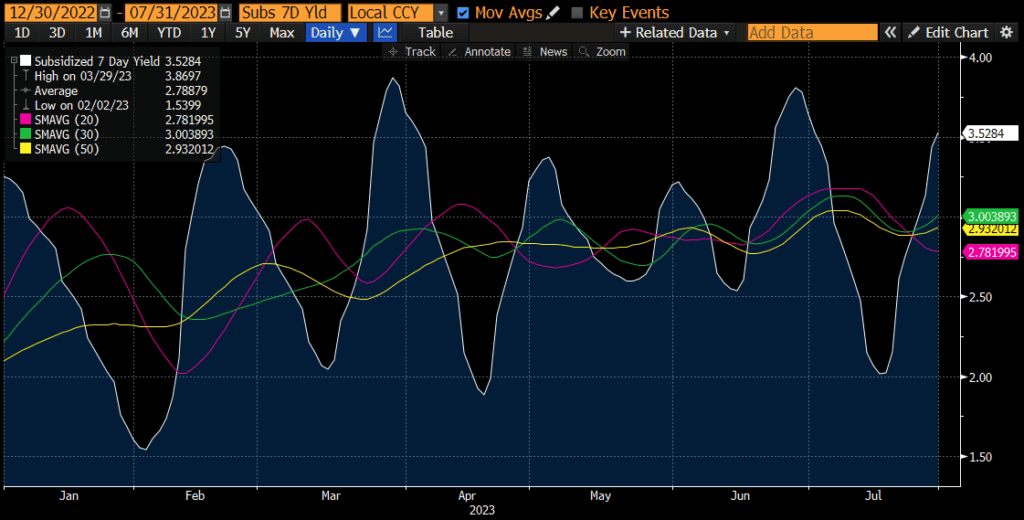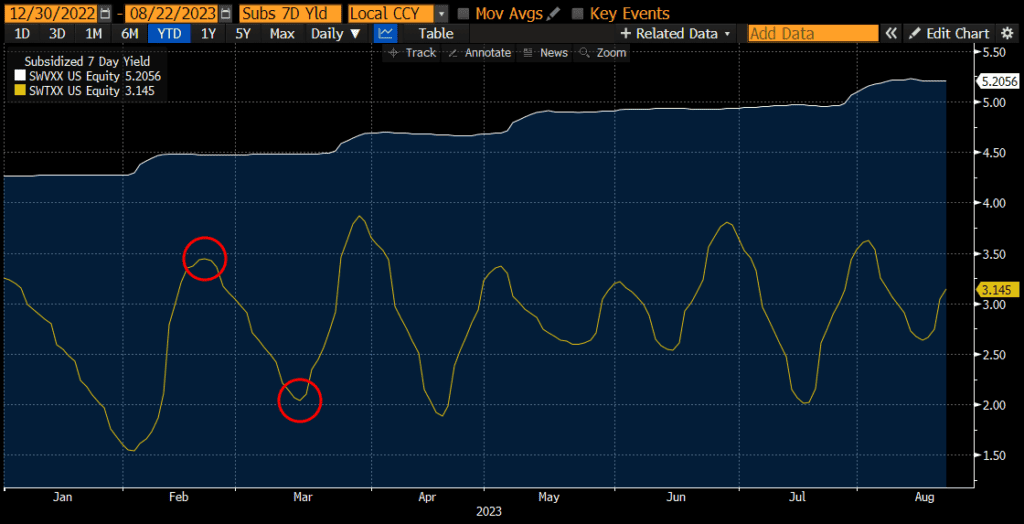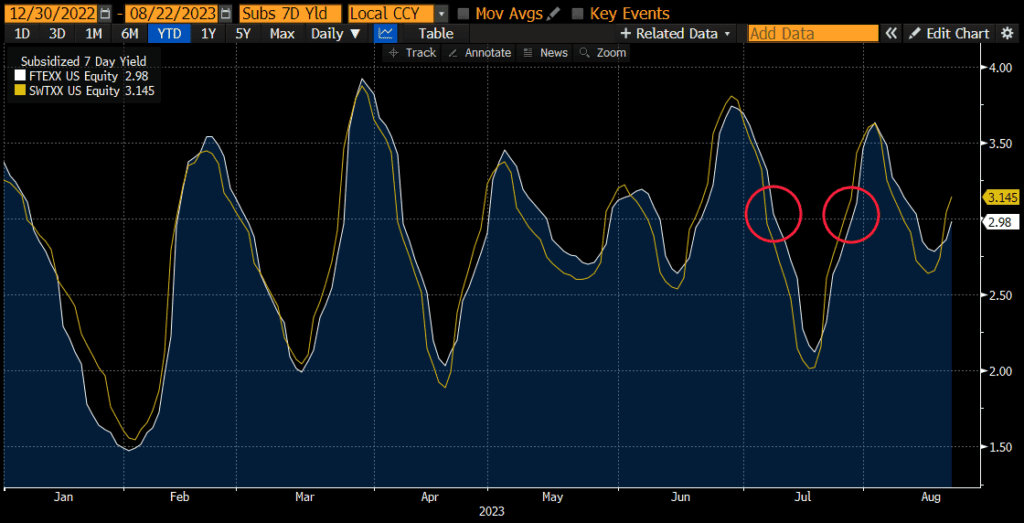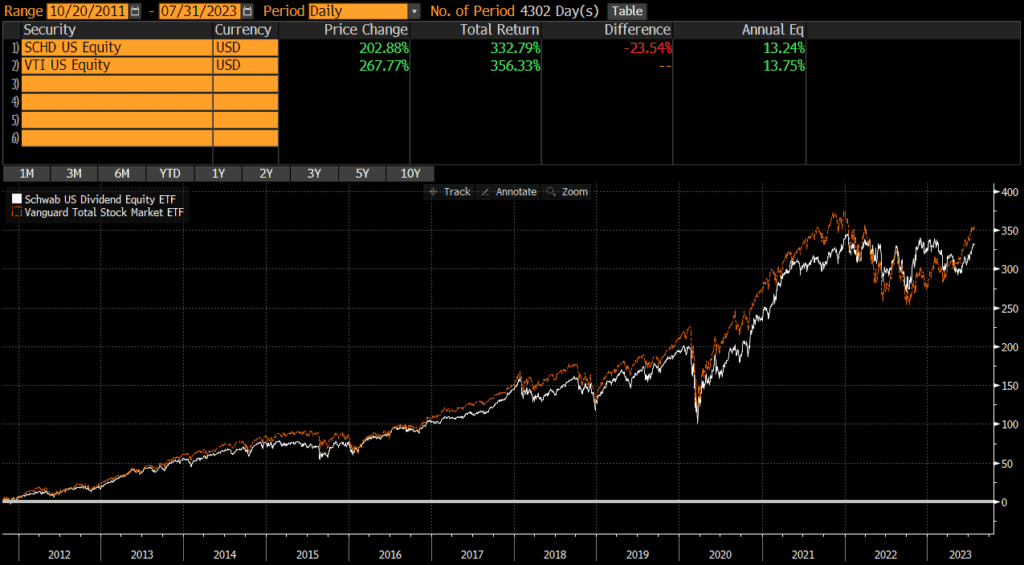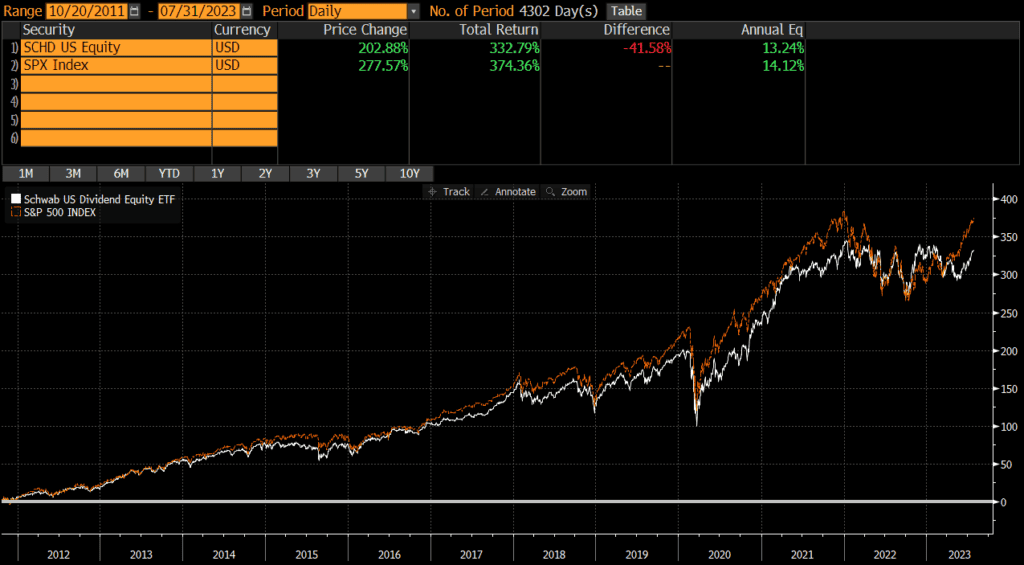SNAXX vs SWVXX: Which Fund is Best?
Schwab offers two “prime” money market mutual funds: the Schwab Value Advantage Money Fund Ultra Shares (SNAXX) and the Schwab Value Advantage Money Fund Investor Shares (SWVXX). Many investors ask about the differences between these two funds since they are two of the largest prime money market mutual funds in the market today. When comparing SNAXX vs SWVXX, it is clear which fund is best for most investors.
The Short Answer
SNAXX and SWVXX are two share classes of the exact same fund! There is no need to compare SNAXX vs SWVXX because the only difference is the minimum initial investment amount and the expense ratio. Investors who can make an initial purchase of $1M or more will get a higher yield with SNAXX.
SNAXX vs SWVXX Historical Performance
Since its inception, SNAXX has outperformed SWVXX by .10% on an annualized basis. This has compounded to a 2.05% cumulative difference over the past 17 years, which is relatively small. Currently the yield difference is about .15% however, so future performance may deviate further.
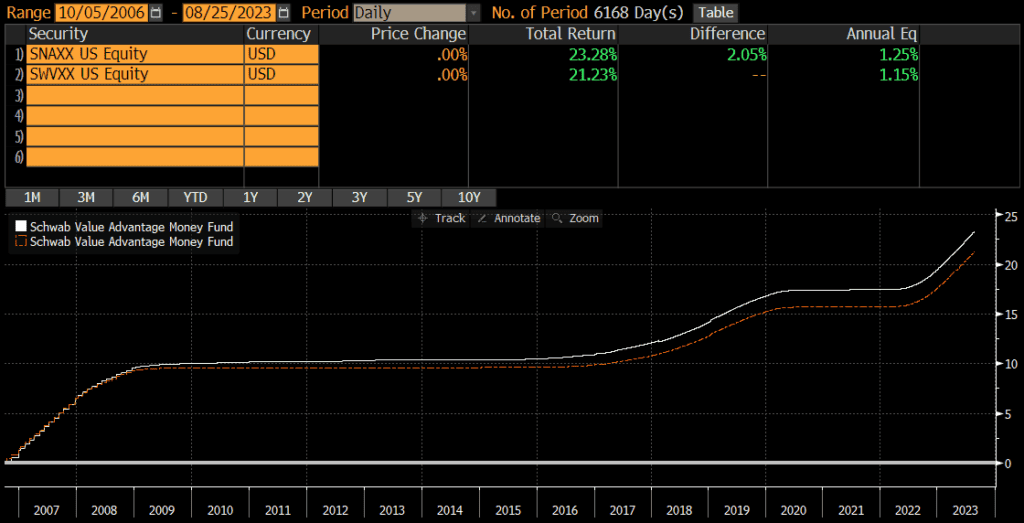
Current Yields for SWVXX & SNAXX
The current 7 day yield is a standardized yield metric for money market mutual funds and the 7 day yields for both SNAXX and SWVXX can be found on the fund’s webpages. See here for SNAXX and here for SWVXX.
What rate is SNAXX & SWVXX paying?
The current interest rate for SNAXX, SWVXX, and other Schwab money markets can be found on Schwab’s money market page.
SWVXX & SNAXX Details
The expense ratio is .34% for the SWVXX investor shares and .19% for the SNAXX ultra shares. Since the funds are just different share classes of the same portfolio, this difference in expenses is what accounts for the differences in yield and performance. Neither fund charges a load or 12b-1 fees.
SWVXX has no minimum investment and investors can invest as little as one cent, while SNAXX has a minimum investment of $1 million. My observation is that investors can keep SNAXX even if they sell and their balance falls below $1 million. The $1 million minimum seems to only apply to the initial purchase.
I have not checked every brokerage, but SNAXX and SWVXX is generally only available to clients of Charles Schwab.
Like most money market mutual funds, investors can sell SNAXX or SWVXX at any time.
SWVXX & SNAXX Risks
Hypothetically, an investor could lose money with SNAXX or SWVXX, but I personally do not think that is a realistic risk as I believe the fund sponsor or the federal government would intervene if that were about to happen. Technically, it is possible to lose money in SWVXX or SNAXX though.
As of June 30, 2023, the fund had nearly $210 billion in net assets. This was composed of approximately $130 billion in the investor shares and $80 billion in ultra shares.
Is SWVXX or SNAXX FDIC Insured?
No, neither SWVXX nor SNAXX are FDIC insured.
Holdings
The two funds are share classes of the same portfolio, so the holdings are identical. The largest holding is repurchase agreements (repos) at 42.6%, followed by CDs at 24.5%, and commercial paper at 18.4%. The vast majority of the fund’s holdings have a maturity of less than one week (81%).
High Balances
Investors allocating more than $1 million may want to consider the “ultra” share class of the fund, whose symbol is SNAXX.
Tax Considerations
SWVXX and SNAXX are “prime” funds which means that it can invest in both government and non-government financial instruments. However, taxable investors may find better after-tax yields in government or municipal (muni) money market funds, both of which offer tax benefits that may improve investors’ after-tax yield.
Government and Treasury Money Market Funds
Most states have an income tax. However, interest from Treasuries is exempt from state tax. Therefore, investors in states with income tax may be better off with a Treasury money market fund (such as SNSXX or SUTXX) that only invests in Treasuries.
Muni Money Market Funds
Investors subject to higher tax rates may consider municipal (muni) money market funds due to the fact the interest is typically exempt from federal income tax (and often from state tax too!).
The caveat with muni money market funds though is that the yields can move up and down A LOT. Therefore, the stated yield that an investor looks up on any given day is not necessarily indicative of the future return. To understand why, read my post on muni money market yields.
Rather than expecting a muni money market fund’s stated yield, I encourage investors to expect the trailing average yield (over the past few weeks). Generally speaking, the after tax returns of munis will only be higher than non-muni money markets for those in the highest tax brackets.
Which is Best? SNAXX or SWVXX?
Overall, SWVXX is a good investment for many situations (and I have used it many times). Those investing more than $1 million should generally go with SNAXX for the higher yield. Investors who are subject to high tax rates may want to consider other funds though.
